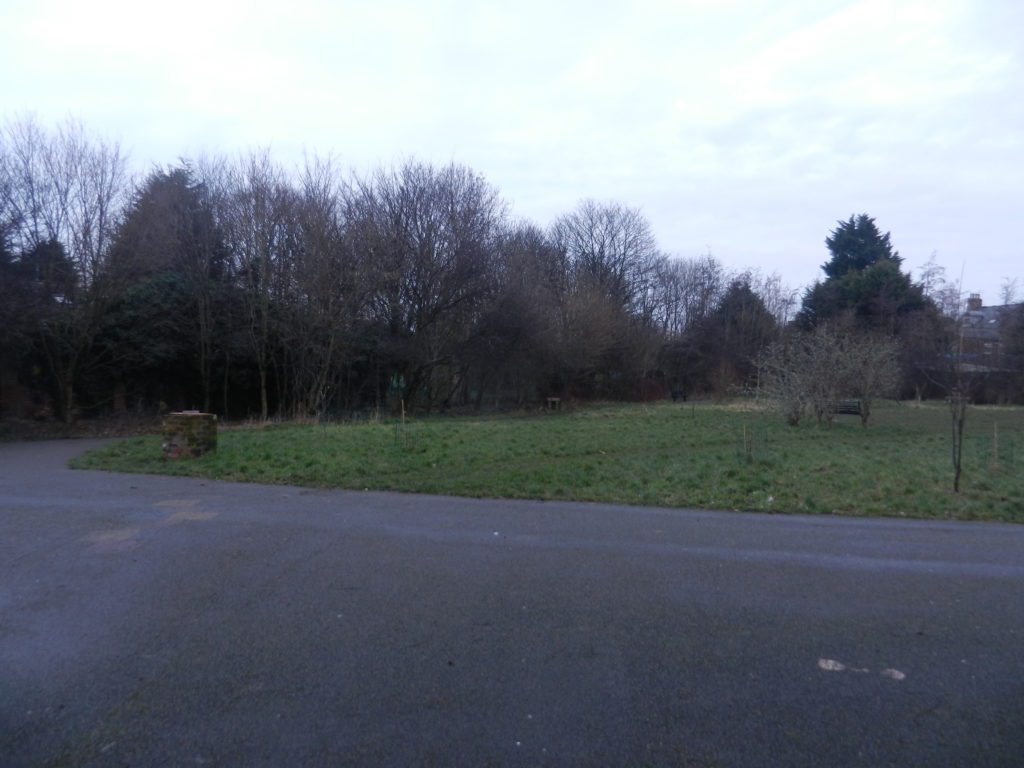
Another of Hull’s many pocket parks (s.p.b.s); this very nice area in summer when the trees are in leaf, has no name plate. I have asked a couple of local people about its history but gained little as there are a lot of houses locally tenanted out to economic migrants. On my street map of Hull and area (Local Red Book) the area is shown as having two large buildings on it with the word ‘Coll’, presumably college. As my ‘Red Book’ was published 2002 (and are no longer produced) at some point since then the buildings have been demolished and this park created. The peripheral planting suggests that the park was created nearer to 2002 than today. Believe it or not, this park has two benches – I take back what I have said about Hull City Council and lack of benches.
In amongst the young trees shown centre picture is a gap in a once high brick wall which, I assume, was once the edge wall of the ‘Coll.’ Through this wall is another wooded area, but I suspect that this was once part of the garden of Duesbery House and therefore not originally part of the park. Duesbery House is a detached house with a detached Coach house alongside at the eastern end of Duesbery Street, off Princes Avenue. Now somewhat run down, but in its day a substantial property. The Victoria Dock Railway curved round behind Duesbery House to Botanic Crossing. In fact the trees beyond the park mentioned above may have grown on this disused line since the 1960s.
The grid plan of Victorian streets in the area north of the west end of Spring bank are lined with substantial terraced houses with at least three bedrooms and with small front and larger rear gardens. The condition of these houses is variable but many appear to remain as desirable family homes. John Markham in his ‘Streets of Hull’ (1987) tells us that Middleton Street with the park at its northern end was named after John Middleton, merchant, councillor, guardian of the poor and leading figure in Victorian Hull. Louis Street, the nearest of the grid plan to Princes Avenue and behind which the Victoria Dock Railway led into Botanic Crossing and Station, was named after Louis Hebblethwaite, land agent and surveyor for the area in the 19th century. Presumably Louis was easier to pronounce than Hebblethwaite!